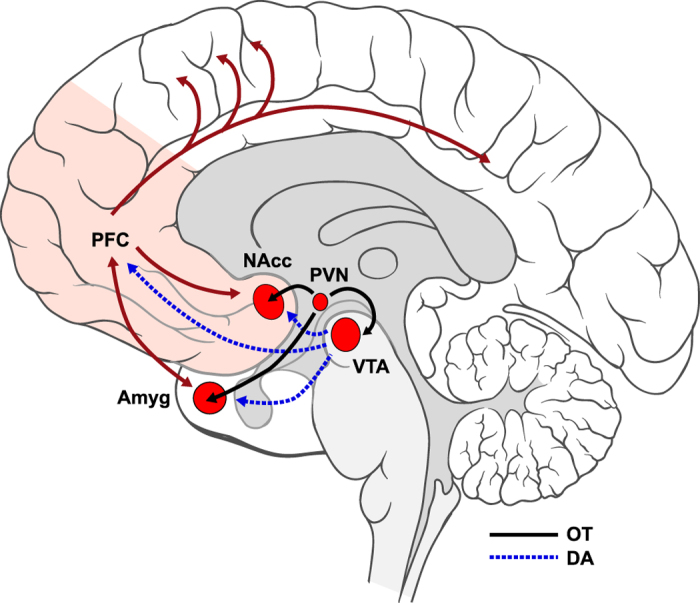Figure 1. Schematic representation of oxytocinergic (OT; solid black) and mesocorticolimbic dopaminergic (DA; dashed blue) pathways.

DA is synthesized in ventral tegmental area (VTA) and projects to nucleus accumbens (NAcc) and amygdala (Amyg) as well as prefrontal cortex (PFC). OT, which is synthesized in paraventricular nucleus (PVN), projects to key limbic sites on the DA pathway (VTA, NAcc, and Amyg), thus potentially allowing it to modulate DA activity. We note that while only neurotransmitter effects of OT are illustrated here, neuromodulatory effects via OT diffusion through extracellular space may also play a role in these processes. Via PFC, which is densely interconnected with many other regions of the brain (dark red solid lines), motivational factors may be able to influence attention and perception (see for review79). Brain art adapted from illustrations created by Patrick Lynch, medical illustrator, and C. Carl Jaffe, MD, cardiologist (available at https://commons.wikimedia.org/wiki/File:Brain_human_lateral_view.svg and https://commons.wikimedia.org/wiki/File:Brain_human_sagittal_section.svg) and licensed under a Creative Commons Attribution 2.5 Generic License, 2006 (CC BY 2.5).
